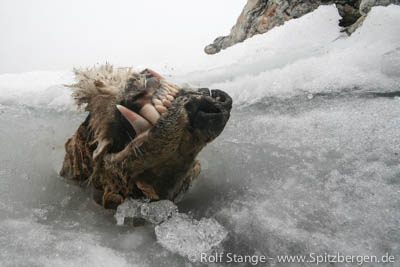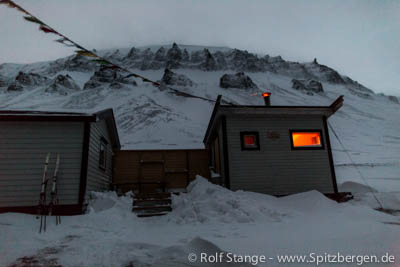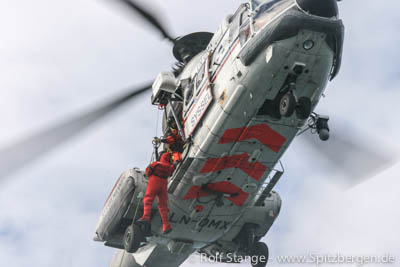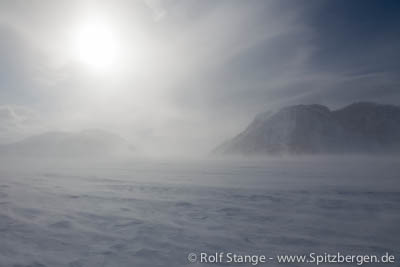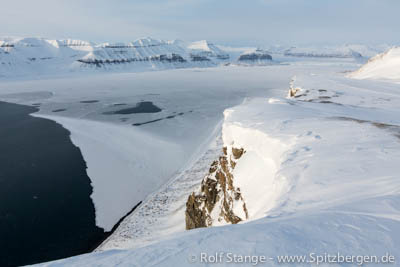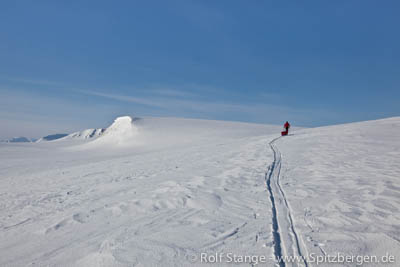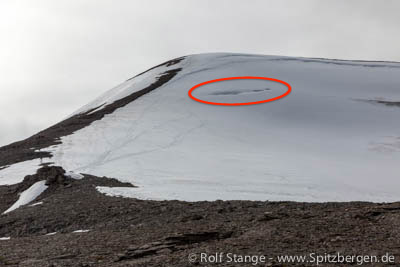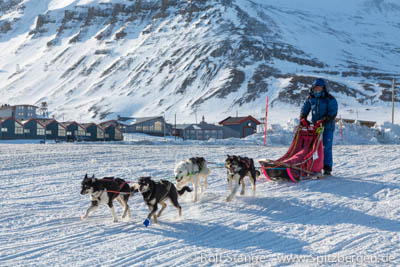-
current
recommendations- Liefdefjord
New page dedicated to one of Spitsbergen's most beautiful fjords. Background information and many photos.
- New Spitsbergen guidebook
The new edition of my Spitsbergen guidebook is out and available now!
- Liefdefjord
New page dedicated to one of Spitsbergen's most beautiful fjords. Background information and many photos.
Page Structure
-
Spitsbergen-News
- Select Month
- April 2025
- March 2025
- February 2025
- January 2025
- December 2024
- November 2024
- October 2024
- September 2024
- August 2024
- July 2024
- June 2024
- May 2024
- April 2024
- March 2024
- February 2024
- January 2024
- December 2023
- November 2023
- October 2023
- September 2023
- August 2023
- July 2023
- June 2023
- May 2023
- April 2023
- March 2023
- February 2023
- January 2023
- December 2022
- November 2022
- October 2022
- September 2022
- August 2022
- July 2022
- June 2022
- May 2022
- April 2022
- March 2022
- February 2022
- January 2022
- December 2021
- November 2021
- October 2021
- September 2021
- August 2021
- July 2021
- June 2021
- May 2021
- April 2021
- March 2021
- February 2021
- January 2021
- December 2020
- November 2020
- October 2020
- September 2020
- August 2020
- July 2020
- June 2020
- May 2020
- April 2020
- March 2020
- February 2020
- January 2020
- December 2019
- November 2019
- October 2019
- September 2019
- August 2019
- July 2019
- June 2019
- May 2019
- April 2019
- March 2019
- February 2019
- January 2019
- December 2018
- November 2018
- October 2018
- September 2018
- August 2018
- July 2018
- June 2018
- May 2018
- April 2018
- March 2018
- February 2018
- January 2018
- December 2017
- November 2017
- October 2017
- September 2017
- August 2017
- July 2017
- June 2017
- May 2017
- April 2017
- March 2017
- February 2017
- January 2017
- December 2016
- November 2016
- October 2016
- September 2016
- August 2016
- July 2016
- June 2016
- May 2016
- April 2016
- March 2016
- February 2016
- January 2016
- December 2015
- November 2015
- October 2015
- September 2015
- August 2015
- July 2015
- June 2015
- May 2015
- April 2015
- March 2015
- February 2015
- January 2015
- December 2014
- November 2014
- October 2014
- September 2014
- August 2014
- July 2014
- June 2014
- May 2014
- April 2014
- March 2014
- February 2014
- January 2014
- December 2013
- November 2013
- October 2013
- September 2013
- August 2013
- July 2013
- June 2013
- May 2013
- April 2013
- March 2013
- February 2013
- January 2013
- December 2012
- November 2012
- October 2012
- September 2012
- August 2012
- July 2012
- June 2012
- May 2012
- April 2012
- March 2012
- February 2012
- January 2012
- December 2011
- November 2011
- October 2011
- September 2011
- August 2011
- May 2011
- April 2011
- March 2011
- February 2011
- January 2011
- December 2010
- November 2010
- September 2010
- August 2010
- July 2010
- June 2010
- May 2010
- April 2010
- March 2010
- February 2010
- November 2009
- October 2009
- August 2009
- July 2009
- June 2009
- May 2009
- April 2009
- March 2009
- February 2009
- January 2009
- December 2008
- November 2008
- October 2008
- August 2008
- July 2008
- June 2008
- May 2008
- April 2008
- March 2008
- February 2008
- April 2000
- Select Month
-
weather information
-
Newsletter

| Guidebook: Spitsbergen-Svalbard |
Home → April, 2014
Monthly Archives: April 2014 − News & Stories
Polar bear found dead in Petuniabukta had been anaesthetised for scientific purposes
Initially, it seemed to be a very normal, natural course of things when locals from Longyearbyen found a dead polar bear in Petuniabukta, near Pyramiden, on 07 April. Soon, however, it turned out that the animal had been anaesthetised for scientific purposes just a few days before, on 04 April. The body was consequently brought to Longyearbyen for a postmortem.
In contrary to early local rumours, it has been stated that outer injuries, as might have been caused by another bear, are not present. Other polar bears pose a real threat to anaesthetised bears. The cause of death is at present unclear. Tissue samples have been taken for further investigations, but it may take weeks until results are available.
Anaesthetisation of polar bears can have secondary effects which may be lethal in extreme cases. Once scientific works are finished, the animals are not being surveyed any further. Other bears may do harm to defenceless polar bears. Also a change of position can inflict suffocation. This is what happened to a polar bear found dead on Edgeøya in September 2013, which had been anaesthetised shortly before (see Spitsbergen-Svalbard.com news: Polar bear dead after anaesthetisation by scientists)
Anaesthetisation of polar bears, which includes following them with a helicopter, is a traumatic experience for the animals with secondary effects that are obviously potentially very dangerous. Population data are, in Spitsbergen, not needed for administrative purposes: here as well as in the neighbouring Russian Arctic, polar bears are completely protected. There is no active management such as the fixing of an annual quota for hunting. Threats are more global, mainly climate change and long-lived environmental pollution, and cannot be managed regionally.
In late summer 2012, a polar bear family with two first year cubs were anaesthetised in Billefjord. The family showed significant behaviour changes at least for a while, pointing to the stress such an experience involves for the animals (see Chasing polar bears with helicopter in the name of science, October 2012). It is possible that the bear found dead now is one of the two little cubs of the family in Billefjord seen by many in Billefjord in 2012: it was a 1.5 year old female.
Not always the natural way of life: dead polar bear (archive photo, Nordaustland).
Source: Svalbardposten (16/2014)
First photo galleries from the Arctic 2014
Photo galleries from the current arctic spring are now getting online on this website. A small collection of photos from late March makes the beginning – back then, it was still getting dark at nighttime! Unbelievable …
Over the next weeks and months, much more will follow, from the ongoing spring season with snow mobile and ski trips in the arctic winter to the summer sailing season in Spitsbergen and Jan Mayen. So it will be worth to come back and check the photo galleries and travel reports/triplogs regularly!
Beyond this, new polar panorama photography is currently in preparation for publication on this website.
In late March, it was still getting dark at night time. That made the fire in a wood burning stove in a cosy cabin even nicer!
26 ended their Easter holidays in the SAR helicopter in Spitsbergen
Easter is high season for the outdoors in Scandinavia, and the same is true for Search and Rescue (SAR) forces – depending on the weather. This year, the weather was not very stable during the Easter weekend, with lots of snowfall and some strong winds, which in some regions reached gale force.
In the end, the local SAR forces had to airlift 26 persons out from their Easter trips. This includes a group of 19 on Akademikarbreen (not 16 as mentioned earlier), who had got stuck in bad weather, with 2 tents already destroyed in gusts. They got their ride back to Longyearbyen on Saturday. The same day, a person was evacuated from Petuniabukta (near Pyramiden) after a snow mobile collision. Yes, such a thing can happen, even in the wide-open wilderness of a frozen fjord. Especially in strong winds with poor visibility.
Beyond this, one person had to be airlifted from Kapp Linné and another one from the research vessel Lance, both with injuries.
All persons are well, there were no serious injuries.
Happy Eastern …
The SAR helicopter in Spitsbergen during an exercise. 26 went back to Longyearbyen with it during the last weekend.
Source: Sysselmannen
Yet another SAR operation in Spitsbergen: 16 skiers stuck in storm on Akademikarbreen
Eastern is high season for the outdoors in the whole of Scandinavia, but unfortunately also high season for SAR (search and rescue) operations. On Easter Sunday, again an emergency beacon has been activated in Spitsbergen. A group of 16 skiers, including 3 guides, is currently stuck in a storm on Akademikarbreen, in central parts of eastern Spitsbergen, between Newtontoppen and Storfjord. With a satellite phone they informed the Sysselmannen that 2 tents are already destroyed in the storm.
Next to the SAR helicopters, which are currently on the way, the SAR forces are preparing a snow mobile expedition, as it is uncertain whether the helicopters can land in the prevailing bad weather.
Currently, there is no further information about the situation of the group available.
Akademikarbreen in strong winds. Currently, 16 skiers are stuck there in a storm, waiting for rescue forces.
Source: Sysselmannen
Research vessel Lance breaks ice in Dicksonfjord
In the north and east, the drifting sea ice is now more and more closing around Spitsbergen’s coast, but the fjords remain largely ice-free this year. Even fjords that usually freeze over quite reliably, such as Tempelfjord, Billefjord, Dicksonfjord, Ekmanfjord (all branches of Isfjord) as well as Wijdefjord and Van Mijenfjord are far more open than they usually are, much to the regret of those who are enjoying the current ski, dog sledge and snow mobile season – and, more importantly, the wildlife, who needs the ice to give birth to their offspring, such as Ringed seals, or to find food, as the polar bear does.
At least, some fjords are frozen in their innermost parts. Dicksonfjord had an ice cover that came closer to normal standards than in the case of most other fjords.
Recently, from 8 to 10 April, the research vessel Lance broke a lead of several kilometres into the fast ice of Dicksonfjord. This was done as part of a field course in sea ice, originally scheduled to take place in Hornsund, but as ice conditions there did not develop suitably, UNIS applied for permission to break a lead of “several ship’s lengths” into Dicksonfjord.
The result is an opening several kilometres long. At the innermost position, the ice thickness was a mere 35 centimetres. Further out, it was even less. It can accordingly not be expected that the ice freezes solid again during the current season. It seems rather likely that the long crack may decrease the stability of the whole fjord ice, potentially contributing to an earlier break-up of the ice in Dicksonfjord.
The lead broken by Lance is met with criticism from several sides. Amongst others, Harald Soleim, a Norwegian trapper who has lived in Dicksonfjord for many years, is less than amused. During spring, he uses the fjord ice to travel within his hunting area by snow mobile. He was not even informed about the lead broken by Lance and described the unexpected opening as “directly life dangerous”. UNIS regrets not having informed Soleim in advance. If breaking up fjord ice in times of low ice cover, at the cost of wildlife and humans, is justified for a scientific field course, may be disputed. It is doubtful that permission had been given if standards for scientific operations were equally strict as for touristic activities.
Fjord ice in Tempelfjord: much less than normal in terms of area and thickness. It is controversial for which purpose the ice may be broken when there is already less than needed anyway.
Man fell 6 metres into glacier crevasse on Conwayjøkulen
The similarity to the next to last headline is no coincidence: again, a skier fell down a crevasse on a glacier in Spitsbergen. And again, it went well in the end.
A group of five tourists led by one guide was on the way back from a trip to Newtontoppen, Spitsbergen’s highest mountain. In the area of Conwayjøkulen, northeast of Billefjord, the group got into crevassed area. At the time (Thursday, 16 April) the weather was bad in the area, with strong winds and drifting snow and visibility accordingly poor. The six skiers were roped up into two groups of three persons each, when the guide, leading the first group, well down into a crevasse. His two followers could, however, stop his fall after 6 metres. The second team approached the crevasse and finally managed to retrieve the emergency beacon, which the guide had with him.
Due to the poor visibility on the ground, the rescue helicopter was not able to land, despite several attempts. Rescue forces in Longyearbyen prepared a ski expedition, and the helicopter prepared to winch the six persons all up individually, when the weather improved slightly, allowing the helicopter to land. Meanwhile, the five skiers on the ground had managed to get their guide up from the crevasse. He had suffered light shoulder injuries, but was otherwise unhurt.
All six and their dog could then board the helicopter and return to Longyearbyen.
The exact position of the crevasse has not been published. The wide glacier areas of Lomonossovfonna are generally thought to have few crevasses only. It is possible that the group had ended up somewhere they would not have gone in better visibility. It is not known if the crevasse had been visible under better conditions.
Glacier landscape in the area of Lomonossovfonna, not far from Conwayjøkulen, where a man fell 6 metres into a crevasse on Thursday.
Sources: Sysselmannen, Svalbardposten
East Svalbard Nature Reserves: new regulations in force on 01 May 2014
The highly controversial process of new regulations in the large nature reserves in East Svalbard is now largely coming to an end: the new law is coming in force on 01st May 2014. The quarrel has been open and partly heated since at least 2007.
The result is largely following the Sysselmannen’s proposal from January 2013. It remains, in the eyes of the present author, valid and true that the expertise behind the new regulations is, in large parts, weak or not existent. Nevertheless, most of those traveling the areas in question should at least largely find themselves able to get used to the new situation (and if not, they will have to, anyway) without too drastic changes. Regarding some potentially important details, it remains to see how it will work in practice. This concerns access to the new, so-called scientific reference areas.
The important changes are the following (partly quoted from Spitsbergen-Svalbard.com news, January 2013. Updated and added to as needed).
Six partly new zones will be determined in the large Nature Reserves in East Svalbard. Some of them are large, others restricted to single locations. Different regulations apply to these zones (see map below):
Zone A (yellow): “Scientific reference areas”. Anyone who wants to travel there needs to notify the Sysselmannen at least 4 weeks in advance. The Sysselmannen can require changes of plans or stop them altogether. The result could potentially still come close to a complete closure of the areas in question, which are large, although mostly (but not completely) irrelevant for tourism. The scientific need for and value of such reference areas remains very controversial, no solid arguments that support such a need or value beyond general, rather diffuse remarks of general prevention, have been put forward. This did not keep DN and other interested parties from declaring that such areas were necessary. By the way, an obligation to apply for permission to travel in the East Svalbard Nature Reserves – which cover the proposed reference areas and far more – is already in force and has been so for many years. Time will have to show what the new regulations will really bring. Anything is possible from a little bit more paperwork before the trip to a factual closure of large areas.
Zone B (orange): No admission between May 15 and August 15. This means in practice a closure of parts of Lågøya and all of Tusenøyane for most of the relevant season. This is the only “detail” where the map below needs to be updated: the closed area does not include the whole island, but the west coast and the northern tip. The latter is the only part of the island that is regularly visited by tourists. A similar regulation is already in force for the bird reserves, but these are restricted to smaller areas and locations, mostly the actual breeding colonies on smaller islands, rather than larger islands and whole island groups.
Zone C (green dots): site-specific regulations are to apply. This is a procedure which is getting increasingly common for polar tourism, for example in Antarctica. The site-specific rules are to be compiled by the tourism industry (represented by AECO) under the Sysselmannen’s supervision. A lot of work on these site-specific regulations has already been done. In the east Svalbard nature reserves, there are 4 relevant locations: Polarstarodden (Storøya), Andréeneset and Kræmerpynten (Kvitøya), Dolerittneset (“Kapp Lee”) and Andréetangen (Edgeøya).
Zone D (red dots): smaller areas around cultural heritage sites that are closed completely year round. In force since 2010.
Zone E (red): This is Kong Karls Land. No admission around the year. Has already been in force since for many years.
Additionally, it has been decided that ships sailing in the east Svalbard nature reserves may not carry more than 200 passengers. Grey water and toilet waters may not be discharged within 500 metres off shore and not at all in Rijpfjord, a site for long-term oceanographic studies. Together with the ban on heavy fuel on board ships traveling inside the nature reserves, which has already been in force for some time, these parts of the new regulations make a lot of sense from a conservation perspective.
This map is from the Sysselmannen’s proposal from January 2013 and is used here for practical reasons. The only details that needs some updating is Lågøya, which is not completely closed (15 May-15 August), but only along the west coast and northern tip (Purchasneset), indicated by the red line on the map. The official maps as enclosed with the new law text can be accessed in the Norwegian online law library
Click here for a larger version of this map.
Source: Press release of the Norwegian government: east Svalbard Nature Reserves .
Here you can read the complete law (Norwegian), including maps.
Man fell 25 metres into glacier crevasse on Nordenskiöldfjellet
On Sunday, a skier fell 25 metres down into a crevasse in a glacier on Nordenskiöldfjellet near Longyearbyen. With a lot of luck and swift reaction by the local SAR forces, the man could be rescued essentially without injuries.
The mountain Nordenskiöldfjellet, 1050 metres high, is the southern, higher part of Platåberget and a popular destination for sportive outings from Longyearbyen. The crevasses in the higher, steeper part of the glacier are not unknown. Common routes lead either over parts of the glacier generally assumed to be safe (in a distance of the crevasse in question) or over rocky ridges at either side to the glacier. The latter option is difficult or impracticable in winter, when the rocks, which include some steeper steps, are frozen over with ice.
The skier was in a group of altogether 9 persons who were on the way down from the summit. On the way, the 9 had split up into 2 groups. Once the man, who is in the mid twenties, had fallen into the crevasses, his comrades did not dare to move anywhere, but alarmed the Sysselmannen. Rescue forces of Sysselmannen and Red Cross where soon on the scene with 2 helicopters and after about 2 hours in total the man was in safety again, luckily without any injuries despite a falling distance of 25 metres. It can be assumed that the crevasse was not vertical, which would not be uncommon for a crevasse near the steep contact between ice and rocks at the higher end of a glacier.
The position of the crevasse is given as N78 10.95 E15 26.55 by the Sysselmannen, which is in accordance with the crevasse marked in the photo below. The photo was taken on July 19, 2009 and shows the glacier with less snow cover than currently. At the time of the accident on last Sunday, the crevasse was covered with snow and accordingly invisible at the surface.
Glacier at Nordenskiöldfjellet (archive image, July 2009). The crevasses near the upper end are partly visible. On Sunday, a skier fell 25 metres deep into a crevasse in this area.
Source: Feltlogg Sysselmannen
Trappers Trail 2014: Spitsbergen’s largest dog sled race
Impressions from the Trappers Trail 2014, Spitsbergen’s largest dog sled race. Since 2009, the Trappers Trail is an annual event. The route is in toal 75 kilometres long and takes the teams from Longyearbyen via Todalen and Bødalen to Kapp Laila on the first day, where the teams, organizers and visitors enjoy a memorable evening with bonfire, oven-heated tents and a grand view over Isfjord. The second day takes the teams through Fardalen and up to Longyearbreen. The slope up to the pass to the glacier is the toughest part of the route, which is, altogether, well within reason for reasonably well trained teams.
There are several disciplines, depending on the number of dogs per team and the kind of sledge. “Ski and pulk” is a group on its own. This year, “Longyearbyen Hundeklubb” has announced a record-breaking number of participants: 23 teams with 38 mushers and 199 dogs. The winner was not yet certain at the time of writing.
Trappers Trail (gallery)
- gallery anchor link: #gallery_447
Click on thumbnail to open an enlarged version of the specific photo.
Trappers Trail: Spitsbergen’s biggest dog sledge event
This weekend (April 05/06) it’s time again for Spitsbergen’s biggest dog sledge event, the famous Trappers Trail race. This time, records have been broken before the race even started: No less than 22 teams with 38 mushers and 199 dogs have signed in to participate. This is an all time record until now. The Trappers Trail race is an annual event since 2009.
As the weather forecast is pretty good – overcast, but little wind – the teams, organisers and visitors are looking forward to a great dog sledge weekend. The route is on Saturday from Longyearbyen via Todalen and Bødalen to Kapp Laila, where Longyearbyen Hundeklubb has got a hut, where the particpants will stay until Sunday. The route back is going through Fardalen and up the rather steep slope to the pass over to Longyearbreen. The total distance is 75 kilometres.
Good trip! Looking forward to it …!
Just after the start of the Trappers Trail in Longyearbyen (2013)..
It’s winter in Spitsbergen, but the fjords don’t notice
Temperatures in January and especially February were far above the long-term average (see Spitsbergen-Svalbard.com news: February temperatures in Longyearbyen 15 degrees above average). Now, winter has finally come to Spitsbergen the way it should be, but it looks as if it is too late for the sea water to cool down and allow the fjords to freeze properly. Even fjords that are usually reliably frozen such as Van Mijenfjord, Tempelfjord and inner Wijdefjord are largely open, and fjord ice cover is currently limited to relatively thin sheets in the innermost parts.
Noorderlicht, usually frozen in the ice in Tempelfjord during the spring season, has cancelled the “ship in the ice” for this season and is instead running the first sailing excursions in Isfjord with geology students.
The photo below shows the ice edge in Tempelfjord as of last Saturday (March 29). It is only behind Kapp Schoultz/Kapp Murdoch that the fjord is frozen. The days to come are supposed to be reasonably cold and we hope they may bring more ice. Locals and tourists can chose alternative routes independent of frozen fjords for their excursions, for example to Barentsburg or to the east coast, but the regional environment would greatly benefit from normal ice conditions, for example Ringed seals, which give birth to their offspring on fjord ice later in spring.
The fjord ice edge in Tempelfjord last Saturday (March 29). The fjord is open west of Kapp Schoultz..
News-Listing live generated at 2025/April/30 at 19:22:00 Uhr (GMT+1)
